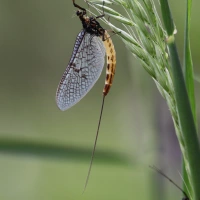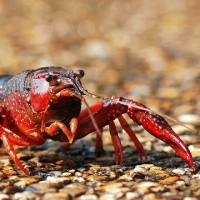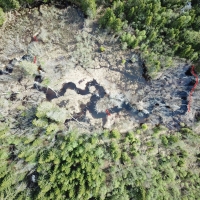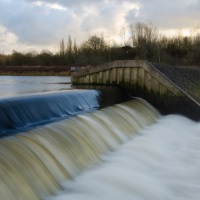Is there life on MARS?

Yellowknife Bay in the Gale Crater on Mars, where evidence of an ancient freshwater lake has been found. Image: NASA/JPL-Caltech/ASU
Is there life on Mars?
This line from a David Bowie song has become a recurring pun as new MARS project (‘Managing Aquatic ecosystems and water Resources under multiple Stress’) takes shape. Recent findings from NASA’s Curiosity Rover mission to Mars have suggested that a large freshwater lake, potentially capable of supporting life, existed on the planet around 3.5 billion years ago – around the time that life began to emerge on Earth. So, as the MARS project works on Earth’s freshwaters, the Curiosity Rover is uncovering evidence of freshwater on Mars.
A special issue of Science published in January 2014 describes how the Curiosity Rover drilled two mudstone sediments in the 96 mile wide Gale Crater where it landed in August 2012 (you can follow the Rover using the New York Times’ tracker). In September 2012, Curiosity found remnants of a gravel streambed and alluvial fan at the northern end of the crater – evidence of flowing water, again around 3.5 billion years ago.

Alluvial fan in the Gale Crater – a sign of ancient flowing water. Image: NASA/JPL-Caltech/ASU
The mudstone samples, taken at a location in the crater with unusually light-coloured and fine sedimentary rocks named Yellowknife Bay, contained smectite clay minerals with a chemical composition indicating they formed underwater. The presence of these clay minerals suggests that there was a calm body of water present in the crater around 3.5 billion years ago, which could have persisted for hundreds of thousands of years. The small clay particles would have sunk into sediment at the bottom of the lake and been compressed and cemented into rock over time.
Analysis of the rock also found chemical elements which were key to the formation of life on Earth – including carbon, hydrogen, oxygen, sulphur, nitrogen and phosphorous – and evidence the freshwater was likely to have a low salinity and neutral pH. As Dr. John Grotzinger, project scientist on the Curiosity mission from California Institute of Technology said in a New York Times interview, “The whole thing just seems extremely Earthlike”.

Curiosity Rover at Gale Crater. Image: NASA/JPL-Caltech/ASU
Does this mean that Mars may have supported freshwater life, billions of years ago? As Professor Sanjeev Gupta, a member of NASA’s Mars Science Laboratory from Imperial College London states, there’s still much work to be done in finding definite signs of life:
“It is important to note that we have not found signs of ancient life on Mars. What we have found is that Gale Crater was able to sustain a lake on its surface at least once in its ancient past that may have been favourable for microbial life, billions of years ago. This is a huge positive step for the exploration of Mars. It is exciting to think that billions of years ago, ancient microbial life may have existed in the lake’s calm waters, converting a rich array of elements into energy. The next phase of the mission, where we will be exploring more rocky outcrops on the crater’s surface, could hold the key whether life did exist on the red planet.”
As on Earth, such long-term environmental records indicate the climatic and ecological conditions and stresses that would have shaped any freshwater life, in this case pointing towards a wetter, warmer climate on Mars around 3.5 billion years ago. Researchers from the Mars Science Laboratory suggest that the conditions would have been ideal for simple microbial life such as chemolithoautotrophs to thrive in. These simple organisms are found on Earth in caves, hydrothermal vents and deep groundwater, and gain energy from compounds produced in geological weathering (‘lithos’ (rock) and ‘troph’ (consumer) can be read as ‘rock-eaters’).

Artists impression of the Curiosity Rover. Image: NASA/JPL-Caltech/Malin Space Science Systems
However, in his introduction to the Science issue, Dr Grotzinger points out that finding evidence of such ancient microbial life on Earth was a formidable challenge, proven through the discovery of microfossils preserved in silica 100 years after Darwin’s theory of evolution. A key task now for the mission is to find rocks and sediment where organic material from the ancient microbes may have been preserved.
If this preserved material is found, it will not only provide proof that life once existed on Mars, but it is also likely to yield insights for understanding how life developed in response to environmental stresses on Earth. We’ll keep an eye on Curiosity’s exploration of these ancient, high-stress Martian freshwater environments as research continues.
Give the gift of Smithsonian magazine for only $12! http://bit.ly/1cGUiGv
Follow us: @SmithsonianMag on Twitter
Give the gift of Smithsonian magazine for only $12! http://bit.ly/1cGUiGv
Follow us: @SmithsonianMag on Twitter
Give the gift of Smithsonian magazine for only $12! http://bit.ly/1cGUiGv
Follow us: @SmithsonianMag on Twitter
Give the gift of Smithsonian magazine for only $12! http://bit.ly/1cGUiGv
Follow us: @SmithsonianMag on Twitter
Give the gift of Smithsonian magazine for only $12! http://bit.ly/1cGUiGv
Follow us: @SmithsonianMag on Twitter














